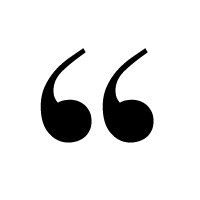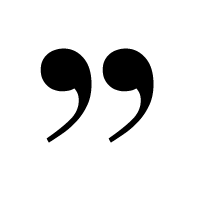
x
Contents
Home
Home
Home
Comics, Differend, Synthesis
And this is where we’ve been heading all along. Through figure and discourse, through the differend, through presymbolic rhetorics, through competing definitions of comics, to arrive at comics as differend and interrupted synthesis.
To recap briefly: the major competing formalist definitions of comics are comics as image and text and comics as sequential art. The image and text school tells us that comics provide a unique reading and writing experience because of their imbrication of modes. The sequential art school argues that it is the reader’s act of closure, filling in the gaps between panels (not to mention the author’s careful construction of those gaps), that defines the comics experience. Various authors (Meskin and Beaty most notably) have argued against either definition and toward definitions based on a larger comics milieu, imitating similar efforts in art history aimed away from defining art and toward conceptualizing an artworld that includes anything from objects in galleries to letters from artists to scholarship itself.
We saw that within the art world there has been a long-standing debate in the field of aesthetics around distinguishing image and text. While this debate has been incredibly fruitful in terms of spawning a variety of useful conceptual frameworks for understanding textual and nontextual artifacts, it has not been successful in finding any kind of solution to the basic problem.
Within the field(s) of rhetoric and composition, we saw some debate about the nature of symbolization and discourse. While Joddy Murray raised important concerns about theorizing and advocating nondiscursive symbolizations, I argued that others (especially Diane Davis and Thomas Rickert) have spread their nets even wider toward presymbolic or nonsymbolic rhetorics.
I pointed to Lyotard as the thinker par excellence of such nonsymbolicity with his concept of the figural. According to Lyotard, the figural—characterized by transgressivity and motivated by the death drive—precedes and makes possible discourse. The death drive is especially important here, because it is the force of unbinding, the resistance to synthesis, that characterizes much deconstructive thought. With this insight Discourse, Figure ends on a bit of a downer.
Lyotard moves from psychoanalysis toward ethics via language games in The Differend. A differend is a situation in which two parties disagree and there is no common ground from which to adjudicate that disagreement. Lyotard tells us that the only answer to a differend is to bear witness to it by creating a new idiom. When people lack a common tongue, invent a new one, but a new one that remembers the original divide.
So it would seem that Lyotard’s previous interest in the visual arts, typified by Discourse, Figure, abates and is replaced by a focus on language, phrases, the very discourse he seemed so interested in problematizing in his early work. Strangely, he then returns to aesthetics, with his final works on the sublime.
There seems to be a gaping hole in Lyotard’s history, and in a very strange way, comics fill that hole. Why does he leave the figural aside and move on to The Differend, whose subtitle is “Phrases in Dispute”? There seems to be a differend in Lyotard's theoretical corpus. Comics bear witness to that differend by linking aesthetics and ethics.
It is no accident that Lyotard ends Discourse, Figure without resolution. It is easy to read him as arguing for figure against discourse. It would be just as easy to argue that he undercuts this argument by making it discursively. Instead, Discourse, Figure is a weird new idiom that bears witness to the differend(s) of image and text, sight and sound, sense and sensibility, matter and thought, transgression and order.
As each of these binaries has slipped into another, we can see that my claim about redefining comics is much less audacious than it may have seemed at first. Indeed, image and text works as a definition only to the extent that it breaks down unity, fails to leave two incommensurable sides in opposition, and points to a surplus outside of any binary. The heterogeneous sides of the binary, whether image and text or any other, cannot be recombined, nor can they be thought to be stable. Discourse is shot through with figure. In a sense, this is actually closer to McCloud’s sequential definition, but only so long as we see closure as always temporary and ready to be undone. The comics artist creates a multiplicity that tempts its reader to collapse its various binaries, only to find resistance and surprise across the page.
Comics is an idiom that bears witness to the differend of figure and discourse, the basic differend of phenomenological experience. Comics require their readers to look and read simultaneously, intermittently. Comics provide the illusion of closure, while simultaneously teaching their readers to suspect easy syntheses. In their very formal constraints, comics put figure and discourse into uneasy conversation and expose the inability for the two to coincide. The common perception that comics are easy to read couldn’t be farther from the truth. Comics are hard to read. Comics make reading difficult by depending on readers who are capable of shifting between looking at the pictures and through the words (and vice versa). They create ethical readers by training them in interpretive instability and hermeneutic hesitation. And that’s why it’s so easy to lose a day in them.
Lyotard’s theorization of the figural (as differentiated from but not opposed to discourse) shows us that rhetoric precedes language—which some may find a strange claim. We see this claim also being made in George Kennedy’s arguments about animal rhetorics, as well as in more recent work in rhetorical theory, particularly Diane Davis’s presymbolic rhetoric and Thomas Rickert’s ambient rhetoric.
If we follow this claim carefully, there are a number of surprising results. If rhetoric precedes language, then linguistic rhetoric—and all symbolization, to use Langer's and Murray’s term—is a subset of a broader, more dense rhetoric. Linguistic rhetoric, along with its inherent abstractions, has been isolated from the entirety of rhetoric and exalted to become the one rhetoric, upon which all others depend.
Might we then imagine a more just system in which linguistic rhetoric and visual rhetoric (or aural or other material rhetorics) sit side by side? No. This would be a return to opposition. Lyotard’s insistence upon differentiation tells us something else. There is a real and important primacy of material rhetorics. Linguistic rhetorics are material rhetorics that have forgotten or covered up their materiality. This leads to a number of possible projects for rhetorical theory: dis-covering linguistic rhetoric’s materiality,* theorizing rhetoric as becoming actualized,** rethinking the relationship between rhetoric and philosophy as a nonverbal one,*** a richer examination of identity based not in words alone.****
All of these are sites for rhizcom(ic)position.
*This is already being done to some extent, but for the most part scholars have focused on the material context outside linguistic rhetoric rather than within.

**My own project begins this task but is embarrassingly conservative in scope.
***A recent issue of Philosophy and Rhetoric devoted to nonhuman rhetorics provides a brilliant example of this kind of task, but it certainly leaves the door open for future projects.
****Rather than raising the marked to the level of the unmarked, this might involve realizing that the unmarked is a deficient ghettoized perversion of the diversity of the marked.
This is not a good book.
(Discourse, Figure 13)

Use the "P" key to play or pause. Use the left and right arrow keys to change the direction of the animation. Use the "S" key to stop.
The animations depicts several variations on the books' title: Rhizcomics, Rhizcomicposition, Rhizcomposition, Rhizomic composition.
Rhizcom(ic)position (an intentionally unpronounceable hodgepodge)* writes from the middle: between words and images, visual and verbal, author and reader, material and idea, concrete and abstract, real and virtual. (I have striven for a lack of parallels in these deficient binaries.) It does not deconstruct them, necessarily, but it bears witness to these various differends. Whence the need for a new (nonsense) word—a new idiom—but also a new idiom written in more than just words.
Rhizcomics, then, cannot result in a rhetorical handbook. There is no "how to rhizcompose," or rather no final one. To rhizcompose means to find new ways to write and be written, and it is not a destination but a becoming. We have not yet (nor will we have) arrived.
Disappointingly, this book will not make you a better writer. You cannot hand it to students along with the expectation that they will absorb its lessons and become more efficient communicators. Nor can you yourself absorb its lessons and pass them along to your students.
Fortunately, this is true of every book. No book can make you a better writer. Every book can make you a better writer. Improved writing comes from writing and reading, not from reading specifically about writing.
This is not a good book, but it’s getting better.
*Or, perhaps, a ragoût, to use Barbara Cassin's elegant term:
There is a grand tradition and there is a great orthodoxy, and then there are all the “others.” There is philosophical language, and then there are the rest—that is, precisely, rhetoric, literature, a certain type of poetry which is not the great ontological poetry or which is not considered as such, etc. All these different registers, for me, are analogous, assimilable, adoptable and adaptable.
That's what I mean by making a ragout. (“Philosophical Displacements” 44-45)
See also Sophistical Practice, in which Cassin translates ragoût as “stew” (6). Regardless, the act has to do with “making do” with the leftovers of philosophy, a task that Cassin sees as particularly feminist and rhetorical.

